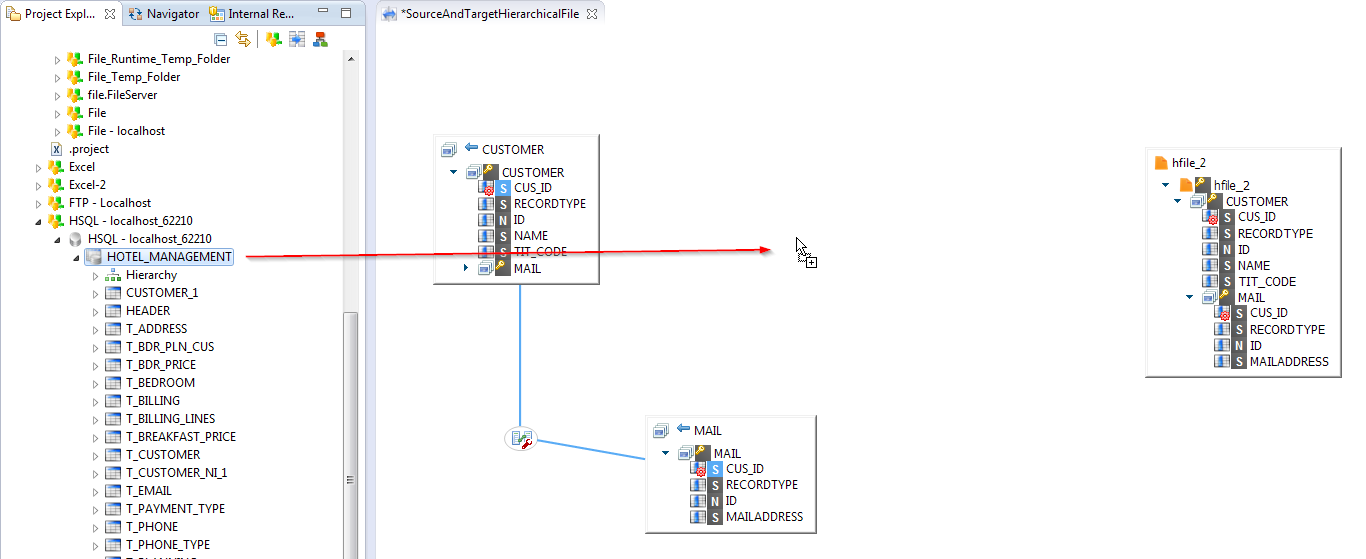During the integration process, Stambia creates and uses temporary tables to load and integrate the data into the target. But, when using files as source and target, these tables cannot be created, as no databases are used.
This article demonstrates a solution to create a mapping to load data when the source and target are both hierarchical files.
The structure of our files looks like this :

We are using here computed fields to simulate a Primary/Foreign key between the record and sub-records. See this article for more informations about computed fields.
The use of staging
Since the S18 Stambia Designer, it is possible to make multi-target mappings, and create stages. The creation of stages is a powerfull fonctionnality which permits to have a temporary place in a mapping (in which we can make operations on data before insertion, like unions, minus, ...).
We are going to use this to accomplish our goal.
Note that even if stages are only available since the S18 Designer, older runtimes can understand and execute the processes generated in S18. It is so possible to use the comfort of S18 without having to upgrade the runtimes.
To use a stage, drag and drop a database schema in which you want the temporary tables used by the stage to be created.

Note
In a mapping all source records have to be instanciated. It is not actually possible to map fields of the sub-records, like the MAIL one, directly from the CUSTOMER main record.
The sub-records have to be put on the mapping and joined. We used here the computed fields to make the join.
Now, we can drag and drop on the stage the fields from the sources we want to use, and then map them to the target :

Note
The Record Keys on the target have to be mapped.
With S17 Designer
The S17 Designer doesn't permit to use stages and multi-target. The solution is to create a table on a database and separate the process in two mappings.
Mapping 1 : Source File > Table
Mapping 2 : Table > Target File
A process can then be created to execute the two mappings.


